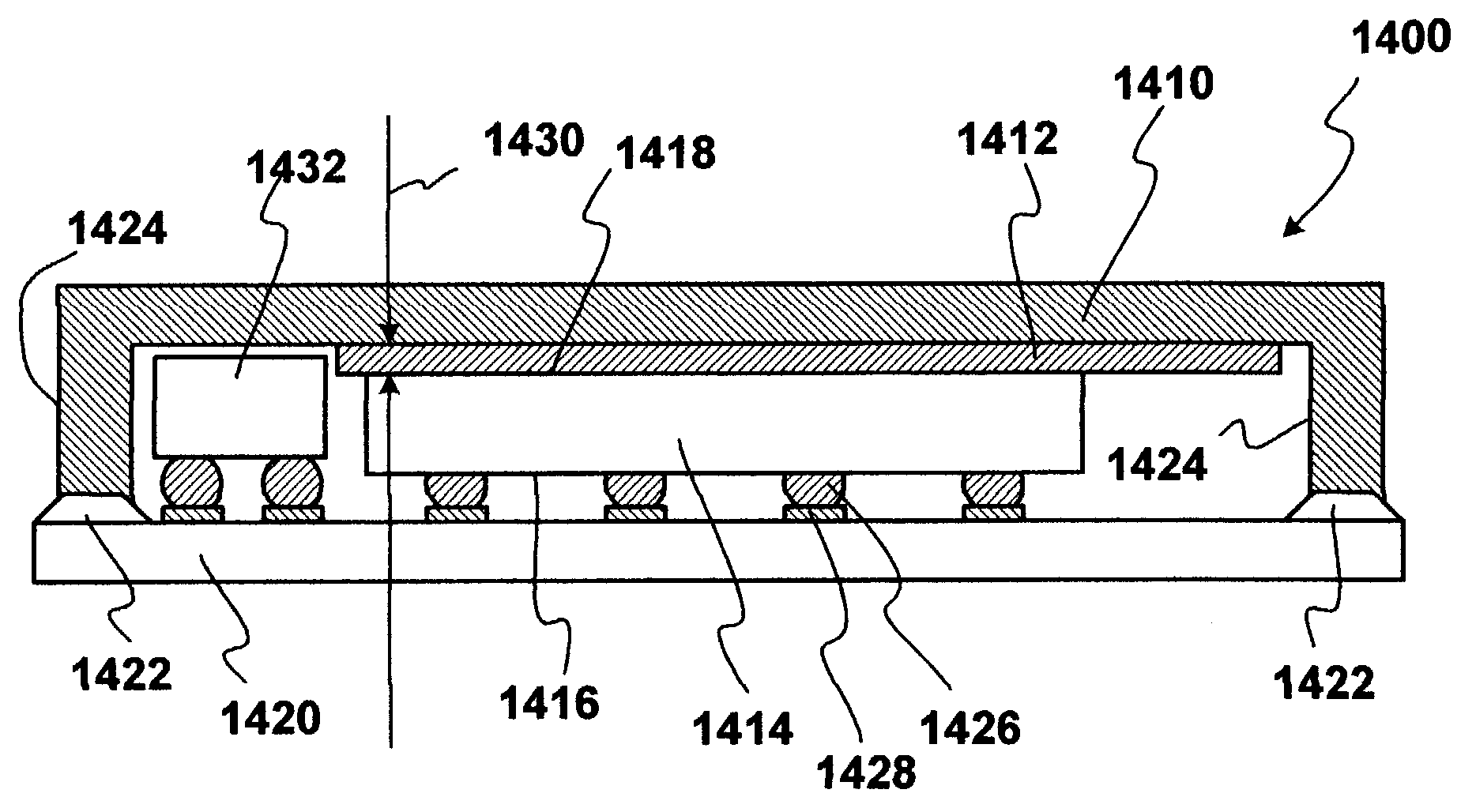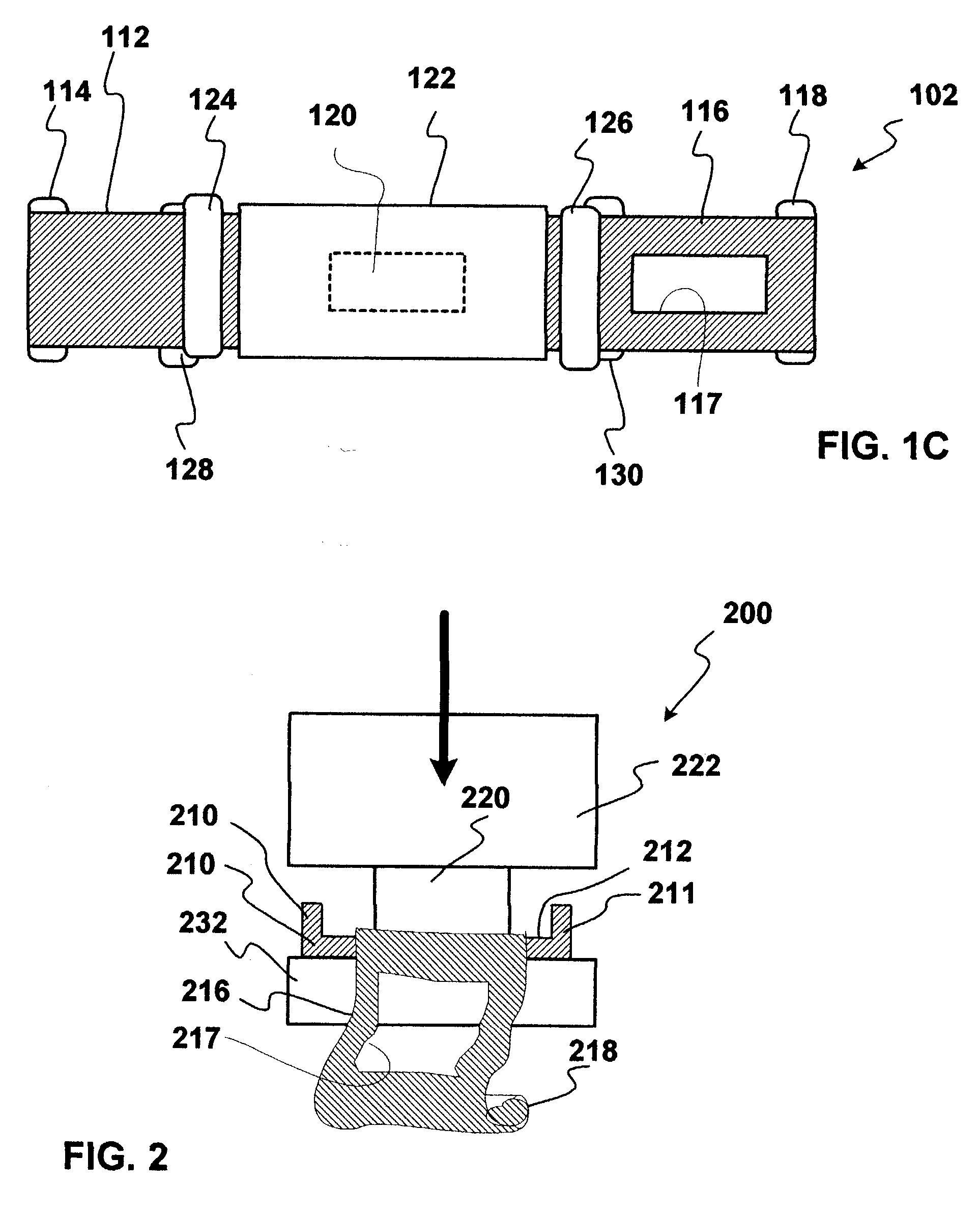Heat sink with preattached thermal interface material and method of making same
a technology of thermal interface material and heat sink, which is applied in the direction of electrical equipment, semiconductor devices, semiconductor/solid-state device details, etc., can solve the problem of tighter thermal budgets for thermal solution design
- Summary
- Abstract
- Description
- Claims
- Application Information
AI Technical Summary
Problems solved by technology
Method used
Image
Examples
example 2
[0065] Reference is made to FIG. 1A, FIG. 1B, FIG. 3, and FIG. 8. In a second example, an IHS-grade copper heat spreader substrate 110 or 810 is stamped with an indium TIM 112. The indium TIM 112 is supplied to the press 122, and the press positive 120 is articulated in a stamping motion against the TIM 112. The TIM 112 is preheated by the support 132 to about 86.degree. C., and the press positive 120 exerts a force of about 400 pounds per square inch.
[0066] After the stamping process a heat sink assembly is achieved that includes a heat spreader substrate 310 (FIG. 3), and a TIM 313 with a rectangular profile 315. During the stamping process, a diffusion bonding zone 835 (FIG. 8) is formed between the heat spreader substrate 810 and the TIM layer 836. In this embodiment, the diffusion bonding zone 835 is an indium-copper IMC.
[0067] The shape of the TIM on the heat spreader substrate can vary according to a given application. In one embodiment, the shape of the TIM is substantially ...
PUM
 Login to View More
Login to View More Abstract
Description
Claims
Application Information
 Login to View More
Login to View More - R&D
- Intellectual Property
- Life Sciences
- Materials
- Tech Scout
- Unparalleled Data Quality
- Higher Quality Content
- 60% Fewer Hallucinations
Browse by: Latest US Patents, China's latest patents, Technical Efficacy Thesaurus, Application Domain, Technology Topic, Popular Technical Reports.
© 2025 PatSnap. All rights reserved.Legal|Privacy policy|Modern Slavery Act Transparency Statement|Sitemap|About US| Contact US: help@patsnap.com



